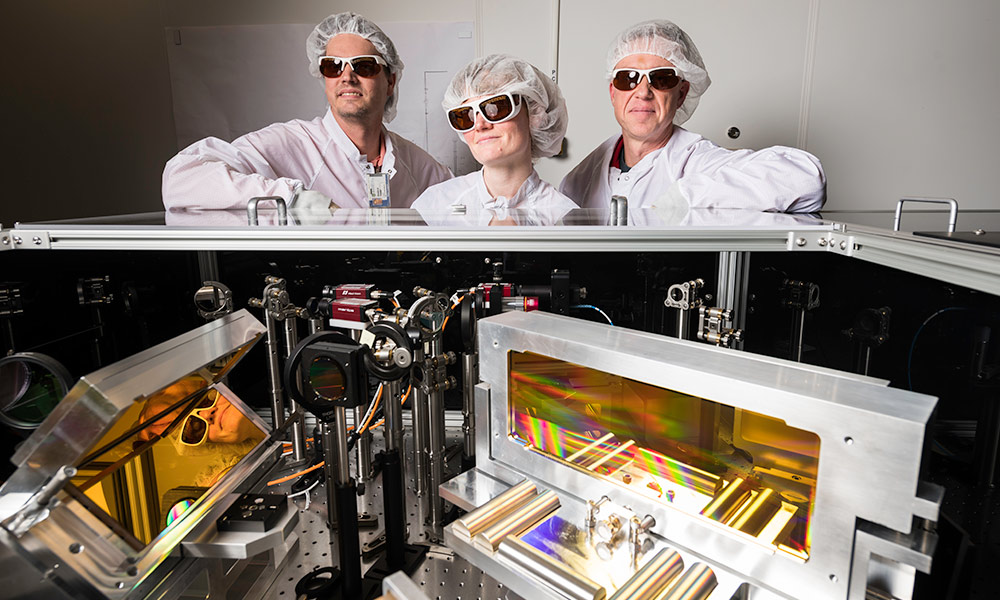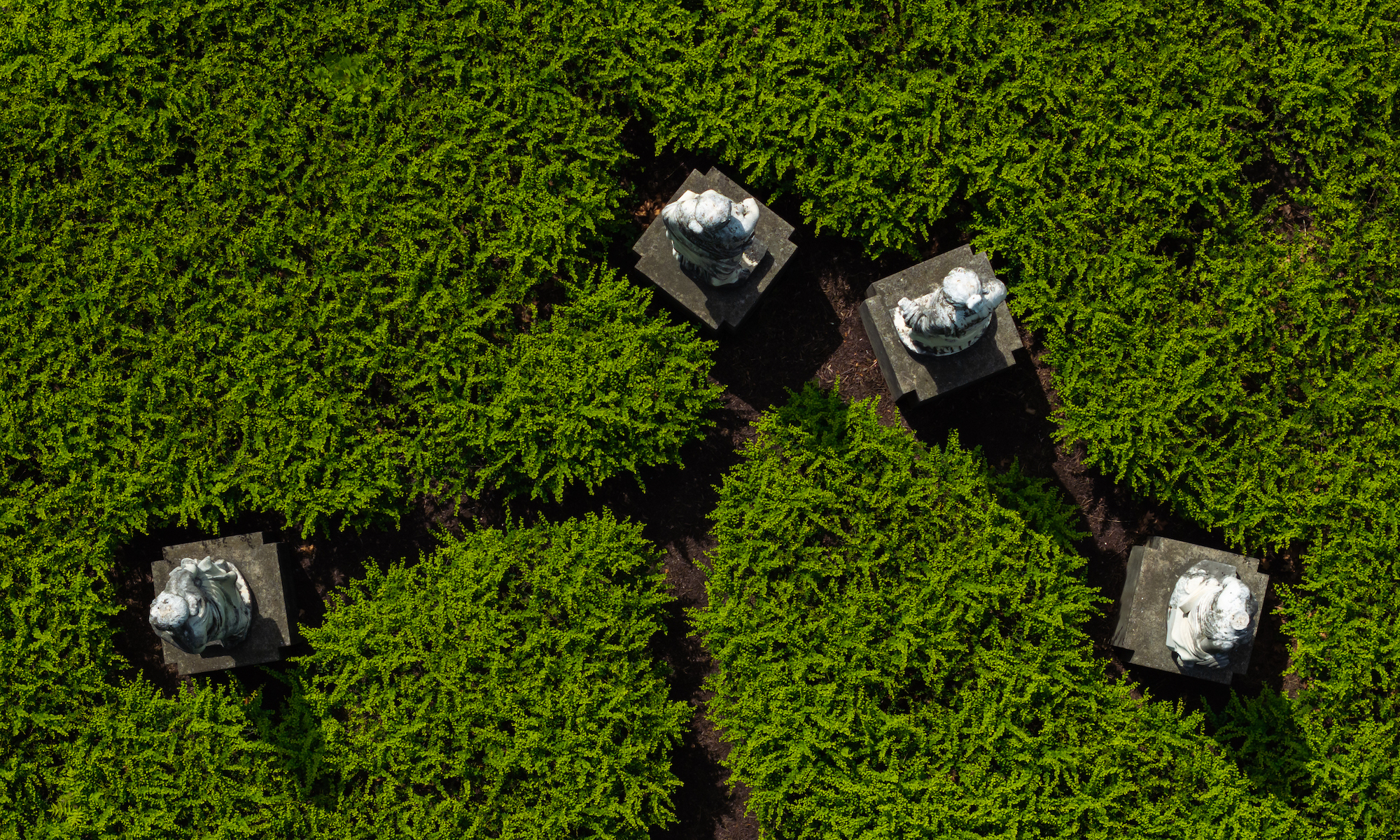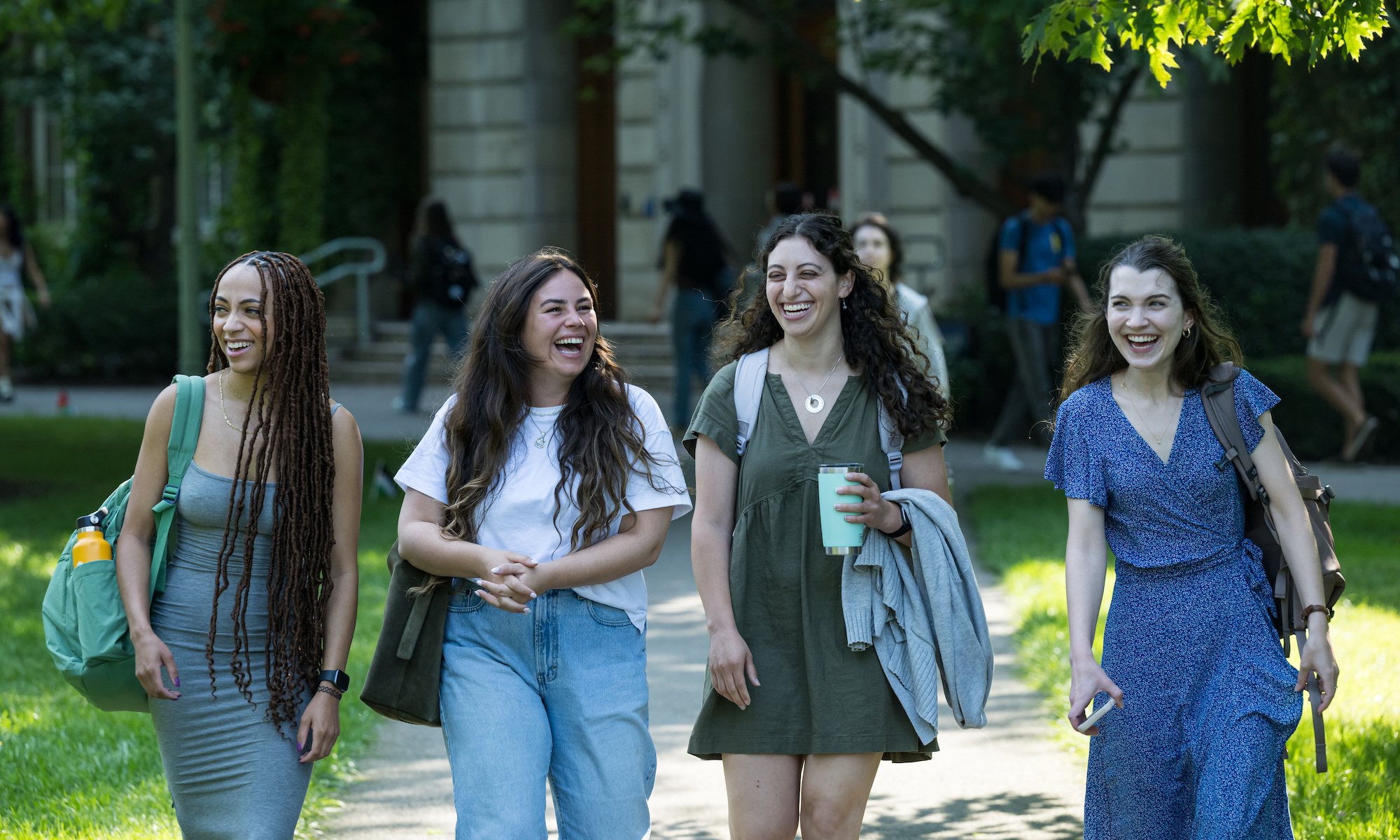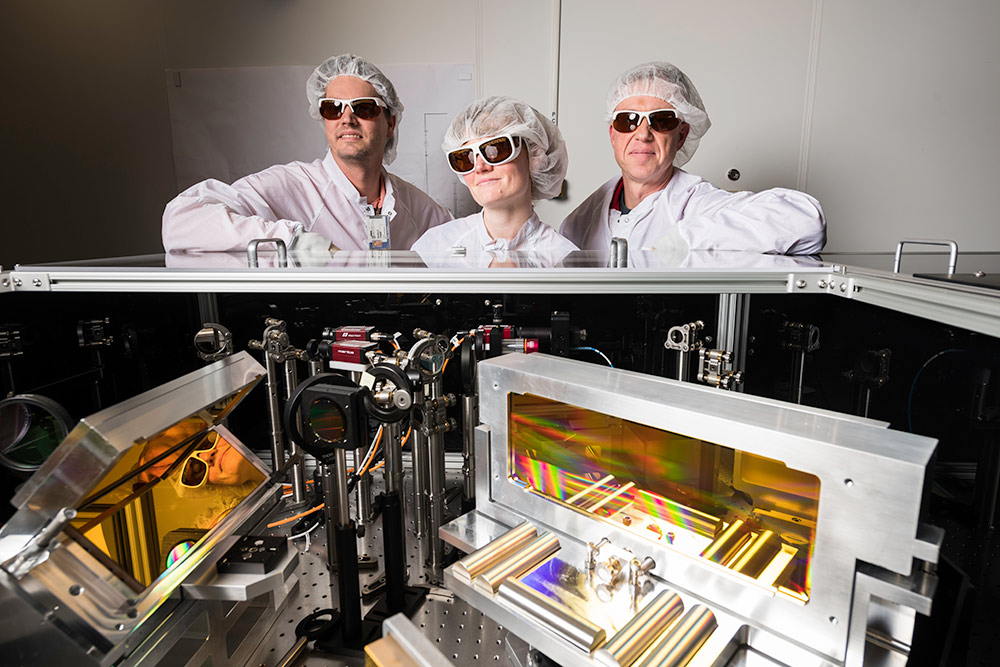
NEXT GENERATION: Donna Strickland ’89 (PhD) and Gérard Mourou received the 2018 Nobel Prize in Physics for work to develop chirped pulse amplification (CPA), research they undertook in the 1980s at the University of Rochester’s Laboratory for Laser Energetics (LLE). Today, members of the LLE, including (left to right) Dustin Froula, senior scientist and assistant professor of physics; his PhD student Sara Bucht; and Jake Bromage, senior scientist and associate professor of optics, use CPA in their own research to develop the next generation high-power lasers and to better understand the fundamentals of high-energy-density physics.
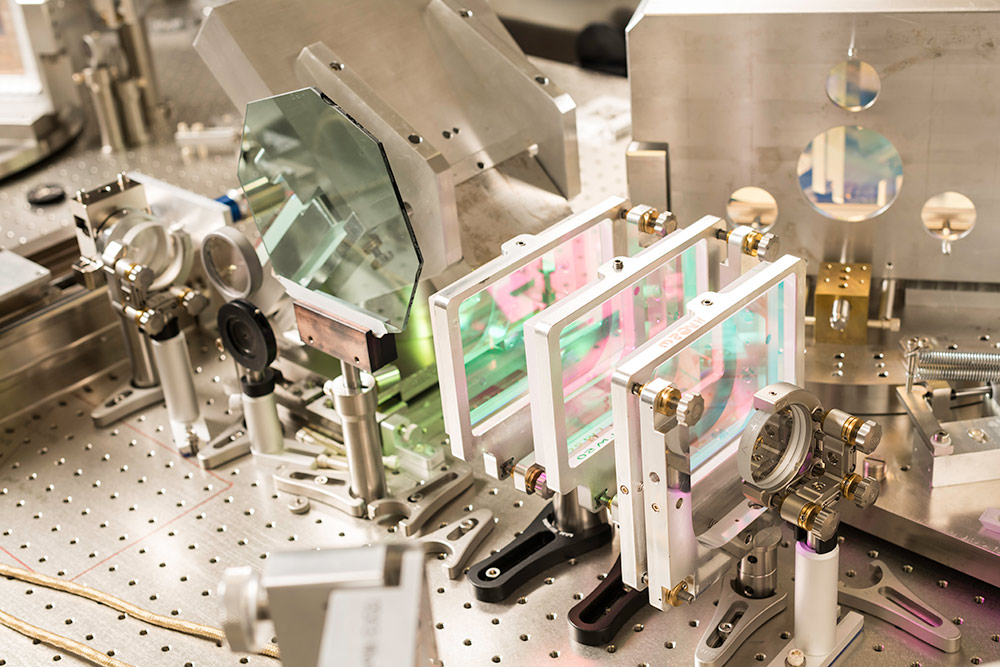
STRETCHING, AMPLIFYING, COMPRESSING: CPA involves a three-part sequence: stretching a laser pulse in time so the power is low; amplifying the pulse to higher intensities; and then compressing the pulse in time back to its exact original duration. Fundamental to the system is a grating, which, like a gold-plated prism, spreads the laser pulse into its wavelengths of color, stretching it in time. “Before the invention of CPA, the challenge was that you could only amplify a laser pulse so high before you blew up your amplifiers,” Bromage says. “Using gratings like this (pictured), you can spread the pulse in time, get the energy up by amplifying the longer pulse, and then use the compressor grating at the end to put it all back together.” Ultimately, CPA “allows you to put a lot more energy into a much shorter pulse.”
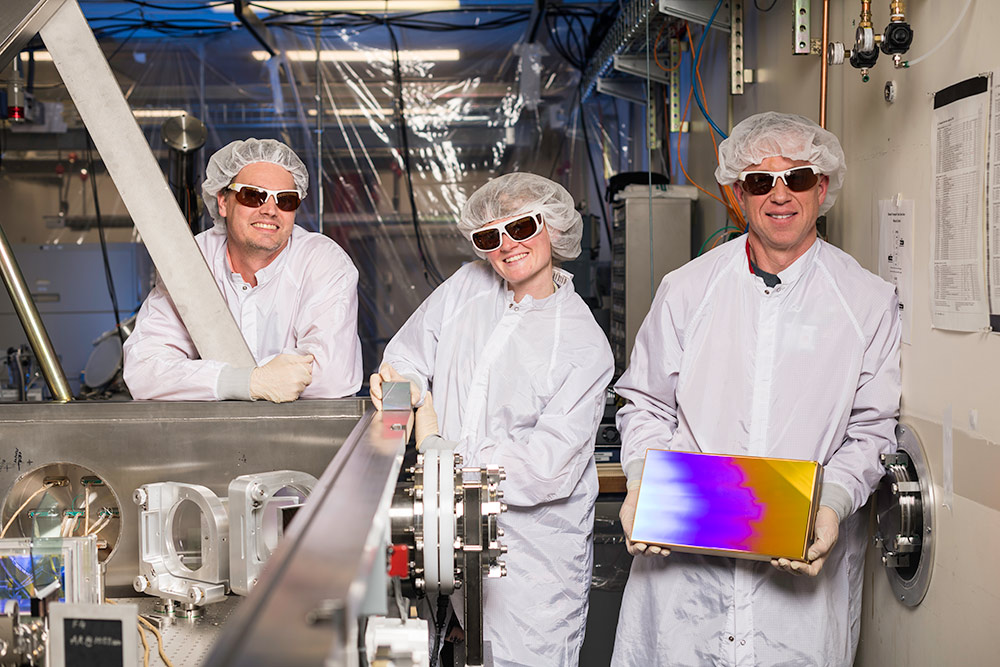
THEN AND NOW: In a lab at the LLE, Bucht holds the original grating developed by Strickland while Strickland was a graduate student at Rochester. Strickland’s original is much smaller than the grating used in current research, held by Bromage. Strickland’s original grating allowed researchers at the time to reduce pulse duration by three orders of magnitude; the larger grating allows researchers today to increase the power of the lasers by a factor of a million compared to before CPA was developed.
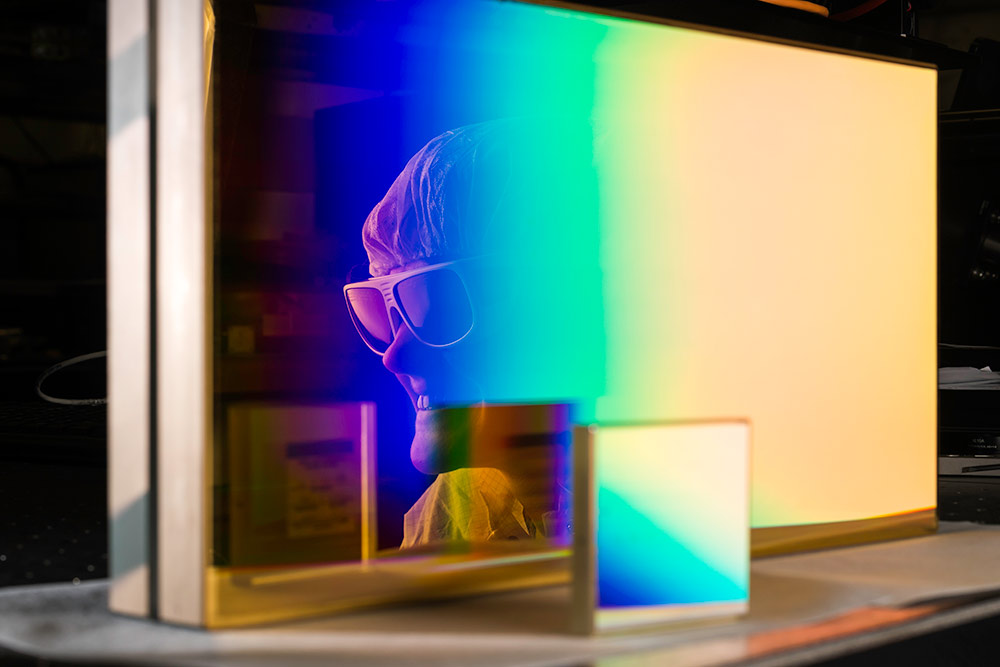
THE NEXT NOBEL? Now, however, scientists have reached another plateau in terms of how much power they can put in laser pulses and how big they can make the gratings. The future of CPA—and the subject of Bucht’s current research—involves using plasma instead of a grating. “It’s another step change in terms of laser power that could lead to a possible Nobel Prize for Sara—potentially the next graduate student project to be recognized by the Nobel committee,” Froula says. “We’ve taken the technology Donna and Gérard developed to its limits, and we’re now looking at what the next step in physics would be.”
Read more
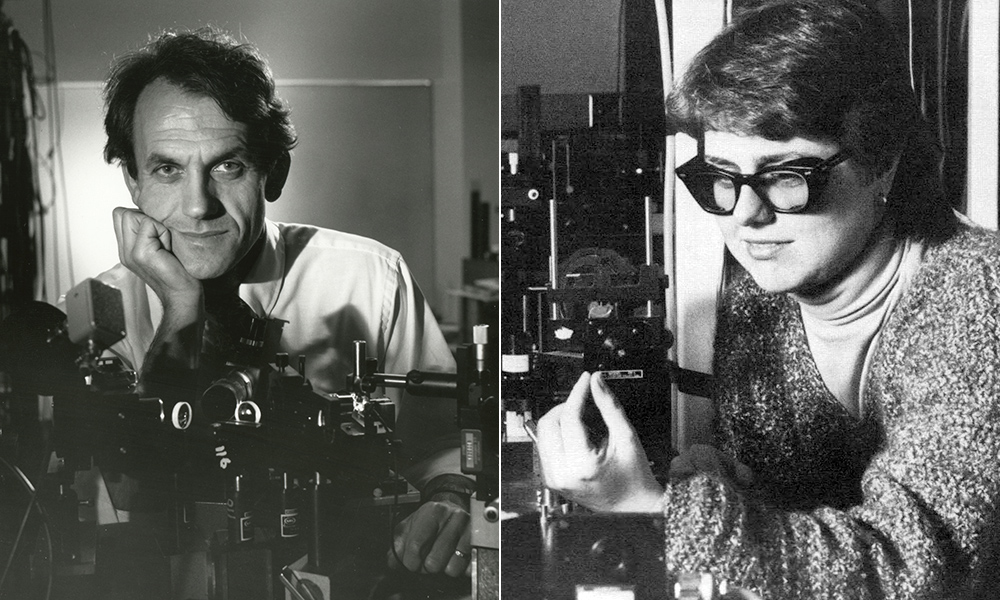
Love at first light
Donna Strickland ’89 (PhD), a self-described “laser jock,” receives the Nobel Prize, along with her advisor, Gérard Mourou, for work they did at the Laboratory for Laser Energetics.

Chirped-pulse amplification: 5 applications for a Nobel Prize-winning invention
Did you know that every time you pick up your smartphone, you are holding in your hand a product made possible by a Nobel Prize-winning technology developed at the University of Rochester?


